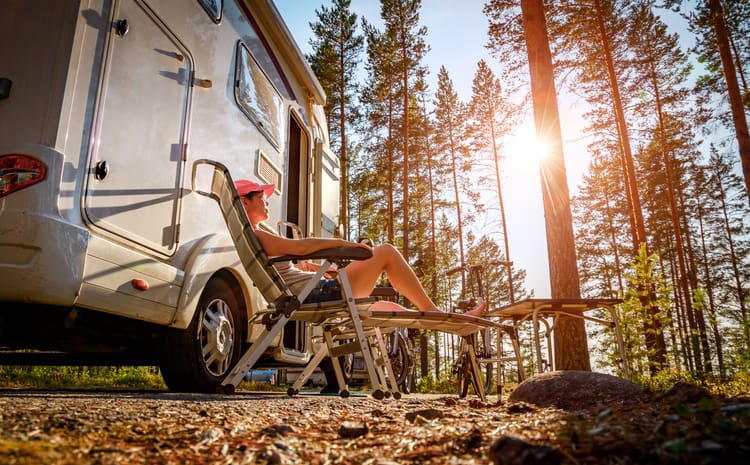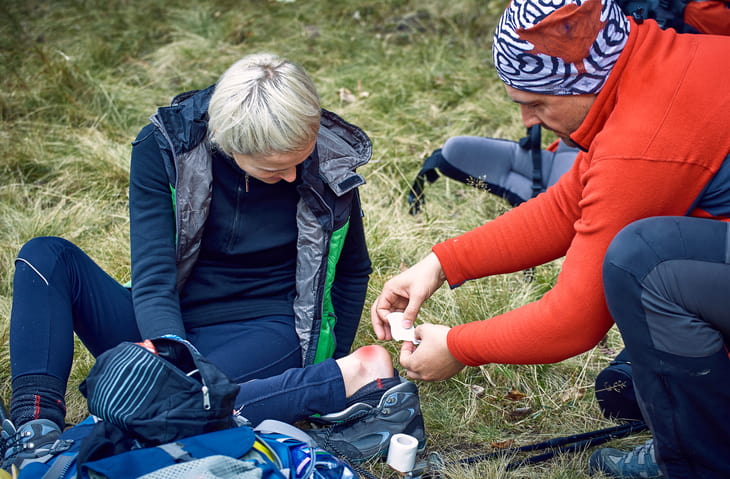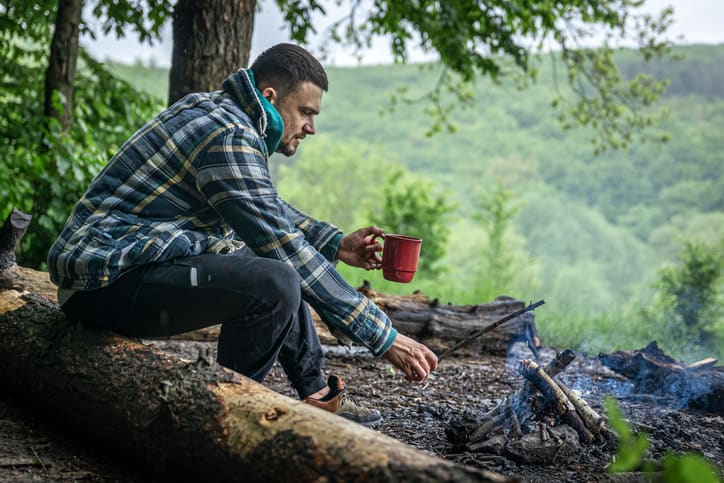Stay Safe During the Summer Holidays

With days full of cloudless blue skies, billowing fresh air brushing through the treetops, and an abundance of adventure to be had around every corner, summer is considered by many to be the best time of year to embark on a vacation in the great outdoors. Starting in May, holidays such as Memorial Day and Independence Day begin flooding the calendar with three-day weekends and opportunities to gather with friends and family to celebrate.
If you are planning on taking a trip in your RV to the lake or want to go camping the “old school” way in a traditional tent this summer holiday season, it’s important to remain safe while having fun under the sun. This blog from RJourney is here to provide you with summer safety tips about everything from what to pack to building first aid kits and safe campfires, so you can enjoy your vacation while staying safe during the summer holidays.
Pack To Be Prepared for Anything
Even though the summer brings sunny days and good vibes with it, it’s still a good practice to pack gear and supplies that will prepare you for any situation. Have a stash of basic vehicle and RV repair tools such as wrenches and screwdrivers available for simple repairs on the fly. Duct tape or a small sewing kit can be useful for patching holes in your tent if the need arises.
Outside of supplies for damages to your outdoor housing, it’s good to bring things you would need for other unpredictable situations as well, including the weather. While the forecast may call for bright, cloudless skies, you’ll want to bring a raincoat and umbrella just in case a storm rolls in out of the blue. Being stuck in damp clothing can lead to illness, rashes, and other uncomfortable conditions that end trips early.
Bring a First Aid Kit

From hiking rugged trails to zipping around on water skis at your nearest lake, it’s easy for the action to heat up when the weather does. If disaster strikes and an injury occurs, you want to make sure you are prepared to adequately handle it. Having a well-stocked first aid kit is essential for optimal camp safety efforts.
When putting together a first aid kit, you’ll want to make sure you have the following supplies:
- Band-Aids: Have multiple sizes and styles available, so you can apply a bandage that is optimized to fully cover (and stick to) the scraped area.
- Sanitation wipes and hydrogen peroxide: It’s important to clean the wound of debris and germs before covering it.
- Gauze and pads: These are for larger injuries that a Band-Aid won’t cover or if a more firm covering is required.
- Small scissors and tweezers: Scissors are great for cutting gauze, Band-Aids, or other fabrics as needed, and tweezers can be helpful for removing splinters or other debris that may enter a wound.
- Triple antibiotic: This ointment helps keep any cuts clean and reduces the chance you will see an infection.
- Basic mediations: Things like aloe, antacids, and pain relievers like Tylenol and Advil are handy to have prepared on an as-needed basis.
- Personal medications: If they don’t need to be refrigerated, keeping your personal medications in a first aid kit keeps them all in a convenient place.
- Sunscreen and insect repellant: These sprays can protect you from harmful sunburns and itchy bug bites, saving you from both short-term and long-term damage to your body.
Before heading out on your trip, make sure to inspect each item in your first aid kit and check expiration dates so you know what to replace and restock. If you are looking for more ideas on how to best build a first aid kit that has everything you need, explore these guides put together by the Mayo Clinic and the American Red Cross.
Stay Safe on the Water
There’s nothing quite like a day on the cool water when the temperatures are soaring and the sun is shining. Spending time at the lake or coastal beaches are a staple of the summer, but also come with a list of risks that vacationers should be wary of. When celebrating the holidays on the water this year, keep these summer safety tips in mind:
- Wear a life jacket. Children under 13 and inexperienced swimmers should wear a life jacket at all times, both on boats or when relaxing in the water.
- Supervise your children.
- Wear sunscreen.
- Stay hydrated. Drink plenty of water to avoid dehydration and cramping
- Be responsible with alcohol consumption. Avoid dehydration and disorientation on the water that can quickly become fatal.
- Swim with a buddy.
- Keep an eye on the weather. Check the radar before you go out on the water and periodically throughout the day, so a storm doesn’t catch you off guard.
- Know your swimming skill and limit.
- Ocean swimming. When in the ocean, look for riptides and heavy waves that can pull even expert swimmers out to sea. Also, check for signs of ocean life such as sharks and jellyfish.
Practice Safe Fire Building

Gathering around the campfire to cook s’mores, sing songs, and tell stories is a hallmark of the summertime camping experience. Follow these fire-building tips so you can build a successful, safe campfire that would make even Smokey Bear proud:
- Start off by preparing the fire pit. Many campsites will provide a metal fire pit you can use, but if you do not have one, you can create a makeshift fire ring out of large stones pressed tightly together. The goal of the fire pit is to keep the fire contained in one area, making it harder for surrounding vegetation to catch fire.
- Have a bucket of water and a shovel on standby close to the fire in case you need to quickly put out the flame.
- When collecting wood to burn, do not cut down live trees or branches. Not only does this damage the forest, but these limbs do not burn. You should always use dead twigs and branches already on the ground.
How To Build the Perfect Campfire
When it comes to building safe, long-lasting campfires, it comes down to two things: the wood and the structure. There are three main categories that firewood falls under:
- Tinder: These are the real fire starters, consisting of materials that catch fire quickly and easily. This includes small twigs, dry leaves, dead grass, and pine needles.
- Kindling: Smaller sticks that are larger than tinder but less than one inch in diameter.
- Fuel: Large, dried-out pieces of wood that include small logs and dead tree stumps, these are the pieces of firewood that keep the fire burning long term. These should be stacked upwind and away from the fire until ready for use.
When building your campfire, make sure you utilize a designated fire pit or fire ring that is out in the open and away from flammable materials like nylon or canvas tents, natural foliage and debris like pine needles or dead leaves, and propane tanks used for camp stoves. For more tips on how to build an effective, controllable campfire, check out these resources from the Smokey Bear website.
Plan Your Summer Vacation With RJourney
With a wide array of fun summer holidays just around the corner, the best time of year for spending time outside is quickly approaching. Now that you’ve picked up tips on how to tackle these days of outdoor celebration safely, it’s time to pick your summer vacation destination. With campgrounds across the country that can accommodate tents, RVs, and cabin-dwellers alike, you’ll be sure to find the perfect place to soak in beautiful summer nights with your family and friends in the great outdoors. Give us a call to check on availability and reserve your campsite today!